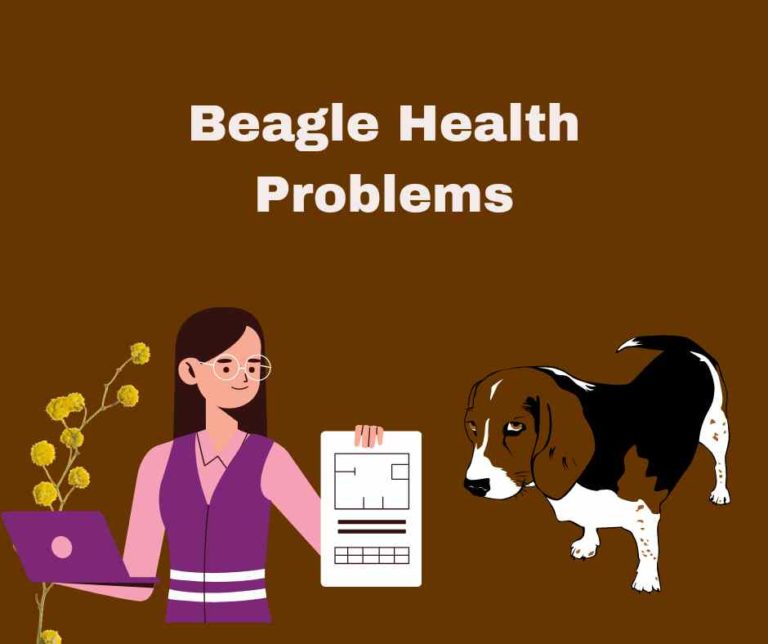Dog Paw Infections [Causes, Signs & More]
![Dog Paw Infections [Causes, Signs & More] Dog Paw Infections](https://petcreeks.com/wp-content/uploads/2023/09/natalie-parham-1dQuP79kLfg-unsplash-1.jpg)
Are you concerned about your furry friend’s paws? Well, fret not, because today we’re diving into the world of dog paw infections.
In this article, we’ll explore the common causes, symptoms, and simple remedies to keep those paws happy and infection-free.
Let’s get started…
What is Dog Paw Infections?
Dog paw infection, also known as pododermatitis, is an inflammation or infection of the skin on a dog’s paw.
It can be caused by various factors such as bacteria, fungi, allergies, or foreign objects. Symptoms may include redness, swelling, pain, discharge, and a foul odor.
Prompt veterinary treatment is essential to prevent the infection from spreading and causing further complications.
Signs of Dog Paw Infections
Paw infections in dogs can occur due to various reasons, such as injuries, foreign objects, allergies, or underlying medical conditions.
Here are some common signs that may indicate a paw infection in dogs:
- Limping or lameness: If your dog is limping or favoring one paw, it could be a sign of a paw infection. Pain and discomfort can cause dogs to avoid putting weight on the affected paw.
- Swelling: Infections can lead to swelling in the paw area. You may notice redness, puffiness, or an enlarged appearance of the affected paw.
- Pain or sensitivity: Dogs with paw infections may exhibit signs of pain or discomfort. They may show sensitivity when the affected paw is touched or manipulated.
- Discharge or pus: Paw infections can result in the production of discharge or pus. You may observe a thick, yellowish, or foul-smelling discharge coming from the paw.
- Licking or chewing: Dogs often lick or chew at their paws when they are experiencing discomfort or pain. Excessive licking or chewing can further irritate the infected area.
- Odor: Paw infections can cause a foul odor to emanate from the affected paw. This odor is often associated with bacterial or fungal growth.
- Changes in behavior: Dogs in pain or discomfort may exhibit changes in their behavior. They may become more irritable, restless, or exhibit signs of aggression.
- Hot or warm to the touch: Inflamed or infected paws may feel warm or hot when touched. Increased blood flow to the affected area can cause it to feel warmer than usual.
- Visible wounds or sores: Paw infections can cause open wounds, sores, or ulcers on the paw pads or between the toes. These wounds can be painful and may become infected if not properly treated.
It’s important to note that these signs can also be indicative of other paw-related conditions, such as allergies, foreign body presence, or tumors.
If you suspect that your dog has a paw infection, it’s best to consult with a veterinarian for a proper diagnosis and appropriate treatment.
Causes of Dog Paw Infections
Dog paw infections can be caused by various factors. Here are some causes of dog paw infections:
1. Allergies: Dogs can develop allergies to certain substances such as pollen, dust mites, certain foods, or even certain materials they come into contact with. Allergic reactions can lead to paw itching, which can result in excessive licking or chewing, making the paws more susceptible to infections.
2. Fungal Infections: Fungi like yeast can thrive in the warm and moist environment between a dog’s toes and paw pads. When the natural balance of microorganisms on the paws is disrupted, fungal infections can occur, leading to redness, itching, and discomfort.
3. Bacterial Infections: Bacteria, including Staphylococcus and Streptococcus, can cause infections in a dog’s paws. These infections can occur when there are cuts, abrasions, or cracks in the paw pads, providing an entry point for bacteria. Symptoms may include redness, swelling, pain, and discharge.
4. Foreign Objects: Dogs may step on sharp objects or get foreign bodies, such as thorns or splinters, lodged in their paws. These foreign objects can cause injuries and introduce bacteria into the paw, leading to infections.
5. Trauma and Injuries: Paw injuries, such as cuts, puncture wounds, or burns, can create an opportunity for bacteria to enter and cause infections. Trauma can occur from stepping on hot surfaces, rough terrains, or encountering sharp objects.
6. Moisture and Poor Hygiene: Excessive moisture on the paws, especially in between the toes, can create a favorable environment for bacterial and fungal growth. Dogs that spend a lot of time in wet or dirty environments, or those with poor grooming habits, are more prone to paw infections.
It’s important to note that these causes can often overlap, and a combination of factors may contribute to a dog’s paw infection.
If you suspect your dog has a paw infection, it’s best to consult with a veterinarian for an accurate diagnosis and appropriate treatment.
Read more about some common dog paw problems.
Diagnosis of Dog Paw Infections
Diagnosing dog paw infections typically involves a physical examination by a veterinarian. Here are some common steps taken during the diagnosis process:
1. Physical Exam: The veterinarian will thoroughly examine your dog’s paws for any signs of infection. They will look for redness, swelling, inflammation, discharge, or any other abnormalities.
2. Medical History: The veterinarian will ask you about your dog’s medical history, including any previous paw issues or treatments. They may also inquire about your dog’s lifestyle, such as exposure to certain environments or allergens.
3. Laboratory Tests: In some cases, your veterinarian may recommend additional tests to confirm the presence of an infection and identify the specific cause. These tests may include:
- Skin Scraping: A small sample of the affected area may be collected for microscopic examination. This can help identify the presence of bacteria, fungi, or yeast.
- Culture and Sensitivity Testing: A sample from the infected area may be sent to a laboratory to grow the bacteria or fungi in order to determine the specific type and to test its sensitivity to different antibiotics or antifungal medications.
4. Allergy Testing: If allergies are suspected as the underlying cause of the paw infection, your veterinarian may recommend allergy testing. This can help identify specific allergens that may be triggering the infection.
5. Biopsy: In rare cases where the infection is severe or not responding to treatment, a biopsy may be performed. This involves taking a small tissue sample from the affected area for further analysis.
It’s important to note that the specific diagnostic approach may vary depending on the individual case and the veterinarian’s judgment.
It is always recommended to consult with a veterinarian for a proper diagnosis and treatment plan for your dog’s paw infection.
Treatment Options for Dog Paw Infections
When it comes to treating dog paw infections, there are several options available. It’s important to note that the specific treatment will depend on the underlying cause of the infection, whether it’s a yeast infection, bacterial infection, or another type of infection.
Here are some common treatment options for dog paw infections:
1. Antibiotics or Antifungal Medications: If the infection is caused by bacteria or fungi, your veterinarian may prescribe antibiotics or antifungal medications to treat the underlying cause. These medications can help eliminate the infection and prevent it from spreading.
2. Topical Treatments: Depending on the severity and location of the infection, your veterinarian may recommend applying topical treatments directly to your dog’s paw. These can include medicated creams, ointments, sprays, or wipes. These topical treatments can help reduce inflammation, alleviate itching, and promote healing.
3. Paw Soaks: Paw soaks can be beneficial for certain types of infections. Your veterinarian may recommend soaking your dog’s paw in a solution that contains antibacterial or antifungal properties. This can help cleanse the infected area and promote healing.
4. Cleaning and Bandaging: Keeping the affected paw clean is important for preventing further infection and promoting healing. Your veterinarian may recommend gently cleaning the paw with a mild antiseptic solution and then bandaging it to protect it from dirt and debris.
5. E-collar or Booties: In some cases, your veterinarian may recommend using an Elizabethan collar (also known as an E-collar or cone) to prevent your dog from licking or biting the infected paw. Alternatively, they may suggest using booties to protect the paw and prevent further irritation.
6. Addressing Underlying Causes: In addition to treating the infection itself, it’s important to address any underlying causes that may have contributed to the infection. This could include allergies, immune system disorders, or other underlying health issues. Your veterinarian may recommend additional treatments or lifestyle changes to address these underlying causes.
Ways of Preventing Dog Paw Infections
Preventing dog paw infections is important for maintaining the health and well-being of your furry friend.
Here are some common ways to prevent dog paw infections:
- Regular Paw Inspections: Take the time to regularly inspect your dog’s paws for any signs of cuts, cracks, redness, swelling, or foreign objects like thorns or splinters. Early detection can prevent infections from developing.
- Proper Paw Hygiene: Keep your dog’s paws clean and dry. After walks or outdoor activities, gently wipe their paws with a clean towel to remove any dirt, mud, or debris that may have accumulated.
- Paw Pad Protection: Protect your dog’s paw pads from hot pavement, rough surfaces, or extreme weather conditions. Consider using paw balms or protective booties to provide an extra layer of cushioning and prevent injuries.
- Nail Trimming: Keep your dog’s nails trimmed to an appropriate length. Overgrown nails can cause discomfort and affect their gait, leading to paw injuries and infections.
- Avoid Harmful Substances: Be mindful of the substances your dog comes into contact with, such as chemicals, cleaning agents, or toxic plants. These can irritate or injure their paws, potentially leading to infections.
- Proper Footwear: If your dog frequently walks on rough terrain or during extreme weather conditions, consider using dog boots or protective footwear. This can help prevent cuts, abrasions, and infections.
- Regular Vet Check-ups: Schedule regular veterinary check-ups for your dog. Your veterinarian can examine their paws, identify any potential issues, and provide appropriate preventive measures or treatments.
- Maintain a Healthy Diet: Proper nutrition plays a crucial role in maintaining your dog’s overall health, including the health of their paws. Ensure they have a balanced diet with essential nutrients to support their immune system and promote healthy skin and paw tissue.
- Avoid Excessive Moisture: Excessive moisture between the paw pads can create a breeding ground for bacteria and fungi. Dry your dog’s paws thoroughly after bathing or exposure to water to prevent infections.
Read more about trimming your dog’s nails.
Frequently Asked Questions
How are paw infections in dogs usually treated?
Treatment for paw infections may vary depending on the severity and cause of the infection. Generally, it involves cleaning the paw, applying topical ointments or antibiotics, and sometimes oral medications. In severe cases, your vet may recommend a bandage or even surgery.
Can dogs get paw infections from walking on dirty surfaces?
Yes, dogs can develop paw infections from walking on dirty surfaces. Bacteria, fungi, or foreign objects present on the ground can enter the paws and cause infections. It’s important to keep your dog’s paws clean and check them regularly for any signs of infection.
Are certain dog breeds more prone to paw infections?
Some dog breeds with long hair or folds of skin on their paws, such as Retrievers, Bulldogs, and Spaniels, may be more prone to paw infections. Additionally, dogs with allergies or weakened immune systems may also be at a higher risk.
How can I prevent paw infections in my dog?
Regular paw inspections and keeping your dog’s paws clean and dry can help prevent infections. Trim the fur around the paws to reduce moisture and debris buildup. Avoid walking your dog on excessively hot or cold surfaces, and consider using protective boots in extreme weather conditions.
When should I take my dog to the vet for a paw infection?
If you notice persistent swelling, severe pain, or foul odor, or if the infection does not improve with home care, it’s important to take your dog to the vet. A veterinarian will be able to diagnose the underlying cause and provide appropriate treatment to ensure your dog’s paw heals properly.
Conclusion
In conclusion, our furry friends’ paws are just as susceptible to infections as our own feet.
Remember to keep a close eye on your dog’s paws, regularly inspecting for any signs of redness, swelling, or discharge.
By taking proactive measures and seeking prompt veterinary care, we can ensure our four-legged companions stay happy, healthy, and free from paw woes.


![Trauma in Dogs [Signs, Causes & Solutions] Trauma in Dogs](https://petcreeks.com/wp-content/uploads/2023/12/pexels-mikhail-nilov-7469228.jpg)
![What Do Beagles Usually Die From [9 Hints] What Do Beagles Usually Die From](https://petcreeks.com/wp-content/uploads/2023/05/What-Do-Beagles-Usually-Die-From-768x555.jpg)
![Why Is My Dog Suddenly Sneezing So Much [8 Reasons] Why Is My Dog Suddenly Sneezing So Much](https://petcreeks.com/wp-content/uploads/2023/04/Why-Is-My-Dog-Suddenly-Sneezing-So-Much-768x555.jpg)

